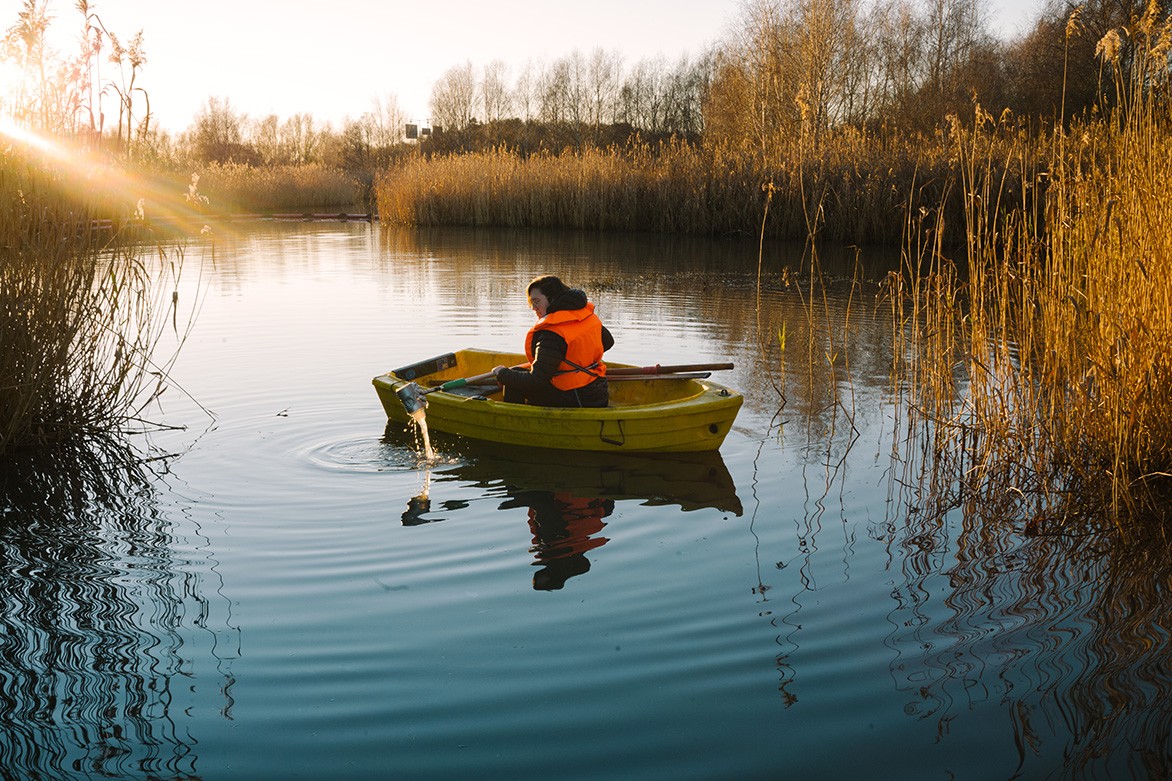Blog
Keeping Gothenburg green

Engineer Sofia Polo keeps the city’s water supply clean by managing storm runoff and tracking pollutants from roofs, car parks and fertilizers.
‘Greenest City on Earth’
This storm-water pond, which collects runoff from nearby Gothenburg, is part of a larger effort to help the Swedish city live up to its billing as the ‘Greenest City on Earth’.
It’s an accolade that’s well deserved, yet Gothenburg could still do better. In this picture, from late November 2020, I’m taking water samples to measure pollutants such as phosphorus and nitrogen from fertilizers; hydrocarbons from nearby roads and car parks; and heavy metals such as copper and zinc that drip from metal roofs.
I work for the city. When a new commercial or residential development is proposed, I help to assess the flooding risk and the potential impacts on storm water. The job involves computer modelling of water flows as well as sampling and analysis.
This pond, which is just upstream from the ocean, has its own job to do. As storm water collects here, heavier pollutants have time to sink and get safely trapped in sediments before the water reaches the sea.
It rains about every third day in Gothenburg, so managing rainfall is a huge priority.
Rain Gothenburg
In my role, I contribute ideas to ‘Rain Gothenburg’, an initiative to make the city the best place to be on wet days. One plan involves making storm water even cleaner by expanding rain gardens, leafy wetlands that soak up and naturally filter rainfall. My mission is to use science and engineering to find the most sustainable ways to handle water. Storm-water ponds can do only so much.
I like being out on this boat, although it’s not a wilderness experience: I can hear traffic from a main road nearby, and the water is brown and murky from the dirt and contaminants of the city.
In Gothenburg, taking care of the environment is truly a group effort. Nearly 10% of our 600,000-plus residents work in civic government.
Working for a city means there’s more bureaucracy than research, but I enjoy the challenge.
